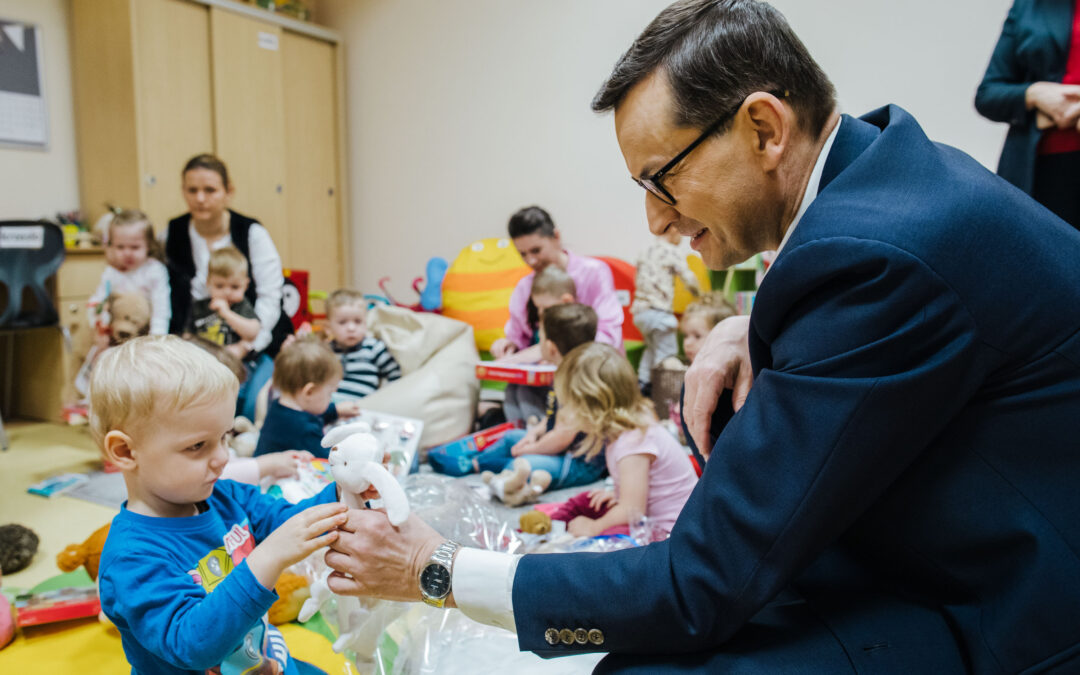The government has launched plans to increase the number of daycare places for children aged three and under by 100,000 – 44% more than there are currently – creating 500,000 new jobs in the process.
Prime Minister Mateusz Morawiecki and family and social policy minister Marlena Maląg yesterday announced an expansion of the Maluch Plus (Toddler Plus) programme, which is centred around early childhood care.
The new edition of the programme will see the number of childcare places increase from 228,000 this year to 330,000 in 2029. The total cost over that period is expected to be 5.5 billion zloty (€1.18 billion).
ℹ️ W ramach programu #MaluchPlus liczba miejsc opieki nad dziećmi w wieku do lat 3 w Polsce 🇵🇱 ma wzrosnąć do 330 tysięcy w 2029 roku. W 2011 roku takich miejsc było 32 tys.⤵️ pic.twitter.com/sWzFfDHkSQ
— Ministerstwo Rodziny i Polityki Społecznej (@MRiPS_GOV_PL) November 30, 2022
The national-conservative Law and Justice (PiS) party came to power in 2015 on the promise of expanding social support, especially for families. One of its flagship policies has been the “500+” child-benefit programme, which gives parents 500 zloty per month for each of their children.
It has also sought to expand childcare facilities, with Morawiecki claiming yesterday that the number of nursery places has increased from below 80,000 in 2014 to almost 230,000 now.
Data from Statistics Poland (GUS), a state agency, show that the number of places in nurseries and clubs for young children increased from 72,945 in 2015 to 191,648 in 2021. The latter figure includes around 116,400 places in private facilities and 75,200 in public ones.
The Maluch Plus programme is primarily aimed at municipal authorities, who will receive up to 837 zloty per child per month for three years to subsidise the operation of a childcare place.
The money can be spent on reconstruction and renovation of buildings, the adaptation of the rooms to the needs of childrenm as well as on the purchase or installation of equipment.
“We want to ensure that every parent, even in the smallest municipality, when they decide to take on a professional challenge, will have no problem finding a modern and friendly place where their child will be properly cared for,” said Maląg.
The PiS government has attached great importance to boosting Poland’s birth rate, which is one of the lowest in Europe. However, the annual number of births has continued to fall under its rule, last year reaching its lowest level since the Second World War.
The government recently adopted a new demographic strategy aimed at supporting families by meeting housing needs, improving financial security, promoting a family-friendly culture and labour market, and developing childcare and healthcare.
It has, however, faced criticised for withdrawing state funding for in-vitro fertilisation (IVF), which had previously helped many parents suffering from infertility to have children.
The red line is deaths. The green line is live births. The blue lines are when the government introduced child benefit policies part of the rationale for which was to increase the fertility rate. https://t.co/DqnmZqNnnV
— Ben Stanley (@BDStanley) September 24, 2022
Main image credit: KPRM (under CC BY-NC-ND 2.0)

Alicja Ptak is deputy editor-in-chief of Notes from Poland and a multimedia journalist. She has written for Clean Energy Wire and The Times, and she hosts her own podcast, The Warsaw Wire, on Poland’s economy and energy sector. She previously worked for Reuters.




















